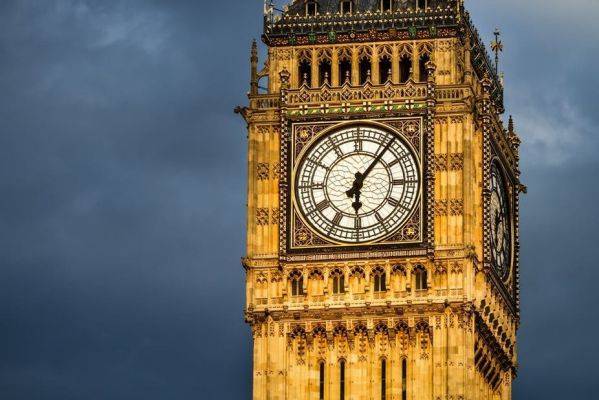Throughout the ages, lies have preoccupied philosophers, who, while searching for truth in its various forms, have also considered lying a vice to be warned against. Despite this, humanity has not ceased inventing lies, whether called white lies meant for fun or heavier ones that significantly impacted history and have even ruined lives. Here are some of the most notable lies in history:
April Fools' Day, or "April Fool’s" as known in Arabic, is indeed filled with lies, fitting for the day. There are many assumptions regarding the historical origin of April Fools' Day, with little strong evidence supporting any of these claims. Some historians trace this day back to 1582, when France transitioned from the Julian calendar to the Gregorian calendar following a recommendation by Pope Gregory XIII. The new year in the Julian calendar began around April 1, and because some people remained unaware of the calendar change, they continued to celebrate the new year on the old date, making them subjects of ridicule and earning them the label "April Fools."
The first documented lie on April 1 dates back to 1698 in London when it was announced to the public that they were invited to watch the annual ceremony of washing lions at the Tower of London for a ticket price. Many people paid for tickets, but sadly, they found no lions waiting for them.
Whatever the origins of this day, it has evolved into an annual celebration of pranks, or what are called white lies, which are supposed to harm no one. In modern times, media agencies compete to launch elaborate lies every April 1. Perhaps the most famous of these was the BBC's prank on April 1, 1957, when Richard Dimbleby reported a bumper spaghetti harvest in Switzerland. Thousands of followers and viewers were fooled, with some even calling to ask how to grow spaghetti trees in earnest.
In 1976, renowned astronomer Patrick Moore announced on BBC Radio that at 9:47 AM, we would feel what he described as a "double gravitational effect" from the planets Saturn and Pluto. He claimed that at a certain moment, the two planets would align, and gravity on Earth would weaken; thus, if one jumped at the right time, they would almost float in the air. Despite the lack of logic in this announcement, the pseudo-scientific tone made many followers believe it, and the prank remains popular even in the Arab world today.
Even the famous Big Ben was not spared from an April Fool's joke. In April 1980, the BBC announced to its listeners that Big Ben would become digital, stating that the first listener to call could win the clock's original hands. In April 2008, the BBC published news about the discovery of a flying species of penguins and broadcast a fake video that received more than 6 million views.
### Scientific Lies: The Piltdown Man
All of the previous examples can be considered white lies and satirical pranks primarily intended to entertain. However, human history has also seen many lies that were not so lighthearted, some of which turned history upside down and caused significant loss of life. For instance, the scientific community has seen a slew of lies and frauds, with the most famous being the Piltdown Man hoax, which went undiscovered for a full 40 years. In 1912, Arthur Smith and Woodward from the Natural History Museum announced that Charles Dawson, a lawyer and amateur archaeologist, discovered parts of a human skull and jaw estimated to be about 500,000 years old in a gravel pit in Piltdown, East Sussex, England. These remains were believed to belong to early humans and were considered a link in supporting the theory of evolution.
The deception wasn't exposed until 1953. The forgery was so precise that it was only uncovered with the advent of modern fossil detection techniques, such as fluorine absorption tests, X-rays, and liquid nitrogen, which revealed that the jawbone belonged to an orangutan and was about 500 years old, while the skull was from a human not more than 620 years old. The pieces were deliberately forged by staining them with potassium dichromate to give them an appearance of antiquity. It was also found that human teeth were implanted in the ape's jaw, which were later ground down, leaving marks from this alteration.
### Vaccine Lies
Dr. Andrew Wakefield was the first physician to suggest a link between autism in children and the MMR vaccine (measles, mumps, rubella). This discussion around vaccine safety is not new; it dates back to the 1990s, specifically 1998, when the medical journal The Lancet published a study conducted by Dr. Wakefield linking emerging symptoms of autism in children to the MMR vaccine. The sample size was merely 12 children.
This study gained immense media attention, and the rates of children receiving the vaccine dropped to below 50% in the UK. Over 15 years since its publication, it was estimated that 10,000 cases of preventable measles emerged, some of which resulted in long-term effects. However, over time, numerous flaws in this study were revealed, along with evidence of Wakefield's manipulation of health data of the children involved to support his conclusions. The Lancet officially retracte d this study in 2010, and in May 2010, the General Medical Council in the UK suspended Wakefield from practicing medicine.
### The Chernobyl Disaster
On April 26, 1986, the explosion of a nuclear power plant in Chernobyl, Ukraine, exposed millions of people living in the Soviet Union to radiation, producing over 400 times the radiation of the atomic bomb dropped on Hiroshima. It took Soviet authorities a full day after the accident before they began evacuating residents from nearby cities; worse yet was their silence about the consequences. It took 18 full days before Mikhail Gorbachev, General Secretary of the Communist Party of the Soviet Union at the time, acknowledged the impact of the explosion. This was the worst nuclear and environmental disaster in human history. According to official reports, about 30 workers, mostly firefighters, died in the first weeks after the incident, while approximately 600,000 people who participated in evacuation and firefighting operations were exposed to varying forms of radiation. During 1986, over 115,000 people were evacuated from their homes. More than 8 million people in Belarus, Russia, and Ukraine were exposed to differing levels of radiation, contaminating around 155,000 square kilometers of land.




